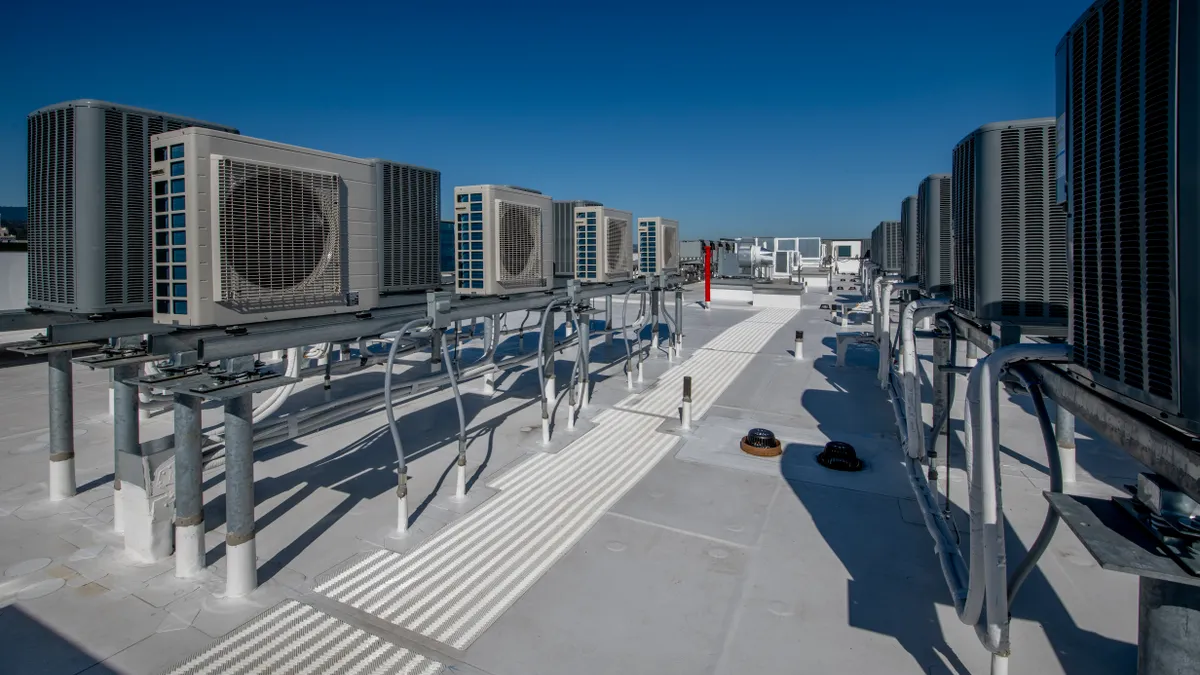Dive Brief:
- Honeywell and Cisco are integrating their platforms to combine artificial intelligence and real-time occupancy data to optimize building energy management.
- Honeywell’s Forge Sustainability+ for Buildings will use the real-time occupancy and environmental data Cisco Spaces collects to provide insights into energy efficiency and building utilization, the companies said in an Aug. 29 news release. The integration will help building owners and operators monitor assets for conditions such as room temperature, lighting and ventilation in specific zones, individual buildings and entire campuses, according to the release.
- “By tapping into a building’s existing technology infrastructure and harnessing the power of AI to fine-tune heating and cooling according to zone occupancy levels, our collaboration with Cisco empowers building owners to gain control of their environment and significantly curb emissions,” Greg Turner, chief technology officer of Honeywell’s building automation segment, said in a statement.
Dive Insight:
Amid hybrid working policies and lower office utilization, building owners are under pressure to operate facilities efficiently and not waste resources, pushing energy management to the forefront of their minds, Verdantix analyst Harry Wilson said in the release.
Operators can “take a fresh look” at addressing the environmental impact of their buildings by “moving their HVAC systems away from consistent 9-to-5 schedules,” Turner said.
Cisco Spaces collects real-time occupancy and environmental data from Cisco’s network infrastructure, environmental sensors, collaboration devices and third-party Internet of Things devices, according to the release.
Wes Sylvester, vice president of Cisco’s industry solution group, pointed to the importance of integrating IT with operational technology to improve building energy use. This integration will allow building operators to do so “regardless of building age or retrofit status,” Sylvester said in a statement.
With Honeywell’s Optimizer Advanced Controller for Buildings, the integrated data can be used to autonomously adjust room temperature, lighting and ventilation based on customer settings and building occupancy, the companies said, to optimize energy use and employee comfort.
Interested in more facilities management news? Sign up for Facilities Dive’s newsletter today















